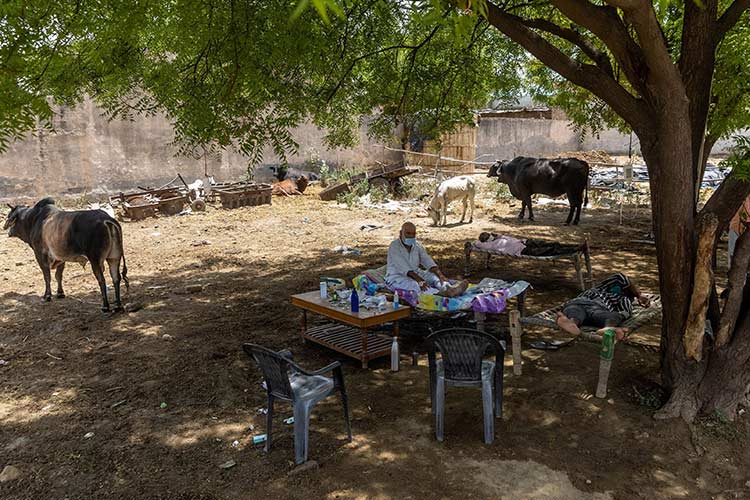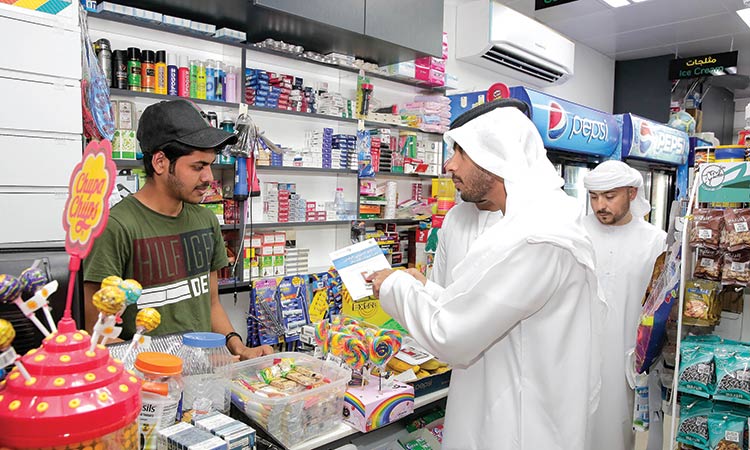Indian shares end lower on fears of lockdown extension

The NSE Nifty 50 closing 0.49% lower and the S&P BSE Sensex ending 0.58% down on Wednesday. Reuters
Senior officials told Reuters earlier on Wednesday that India’s financial hub Mumbai was set to extend lockdown measures until at least April 30.
The market see-sawed through the day, with the NSE Nifty 50 closing 0.49% lower at 8,748.75 and the S&P BSE Sensex ending 0.58% lower at 29,893.15.
“Globally, things are not great, it is very volatile, there will be pressure and some profit-taking,” said Neeraj Dewan, director at Quantum Securities in New Delhi.
“There are fears about the rising number of cases and probable extension of the lockdown, too.” Global stocks turned negative with the pan-European STOXX 600 index dipping 0.7% and London’s FTSE 100 falling 0.9%. US futures were also lower.
Local media reported that Prime Minister Narendra Modi suggested on Wednesday that the lockdown will be extended and restrictions will not be lifted in one go after April 14.
The lockdown has already brought economic activity to a juddering halt and shaved over 23% off Indian stocks in March, with analysts saying an extension would mean more trouble for the market.
As of Wednesday, India reported over 4,500 infections and nearly 150 deaths.
The Nifty bank index closed 0.6% lower and the Nifty IT index slipped 0.77%.
However, the Nifty pharma index remained in positive territory, trimming gains to settle 3.5% higher.
Meanwhile, Indian bond markets are set to demand punishing high yields at the federal government’s first auction of the fiscal year on Thursday as they test both the government’s ability to pay as well as the central bank’s intent to cap interest rates.
The first auction for the year that begins in April occurs against the backdrop of rising market yields as domestic investors fret over illiquidity wrought by the coronavirus pandemic and heavy borrowing by the government.
Yields on 10-year bonds have climbed nearly 50 basis points, to around 6.44%, since late March, when the Reserve Bank of India (RBI) delivered a bigger-than-hoped 75 bps rate cut and infused large amounts of cash into the system. The benchmark short-term policy rate is at 4.4%.
While traders would not reveal the exact prices they would pay for 10-year, 2-year and 40-year bonds at Thursday’s auction, several said they would likely bid at current market yields.
“There is still need for RBI to announce more measures to support market liquidity and to maintain easier financial conditions, in order to accommodate 10 trillion rupees of excess borrowing by centre and state governments,” said A. Prasanna, economist at ICICI Securities Primary Dealership.
The government is set to borrow 4.88 trillion rupees ($63.9 billion), or about 63% of its full-year target, for the April to September period, with its first 190 billion rupees sale scheduled for Thursday.
Traders say that unless the central bank is willing to offer such high yields, underwriters to the auction would be forced to buy some bonds for the first time since September.
“This auction will be difficult. There is no demand at these levels in government bonds going by the volume,” said Murthy Nagarajan, head of fixed income at Tata Asset Management.
Trading volumes in recent weeks have been around a tenth of the average, according to clearing house data, and the high volatility has prompted the RBI to halve trading hours.
The RBI has in the past aggressively bought bonds via open market operations to ease pressure on yields, spurring hopes for similar support this time.
Still, at an auction of state development loans (SDL) on Tuesday, 19 states managed to raise only 325.6 billion rupees against a planned 375 billion, and yields surged across the board with the Kerala government agreeing to pay 8.96% on its 15-year paper, about 200 bps higher than a 15-year federal government bond.
“Between the last and current auction, yield on 10-year SDLs have increased by more than 50 bps,” said Sameer Narang, chief economist at Bank of Baroda.
A calendar outlining the RBI’s plans for open market operations would help give markets some clarity and thus ease yields, he said.
Participants are hopeful the central bank will provide support not only through secondary market purchases, but also in primary auctions which are permitted under extraordinary circumstances, DBS Bank economists said in a note.
Separately, Industry body Asocham has urged the Centre for a stimulus package of at least $200-$300 billion over the next 12-18 months to support the Indian economy.
In a 16-point agenda, the industry body recommended that the Centre institute a stimulus package of at least $200-$300 billion to “thwart one of the deepest global recession expected in the world’s history”.
According to Assocham Secretary-General, Deepak Sood, the chamber believes that in keeping up with most economies of the world to institute stimulus measures with 10 per cent of the Gross Domestic Product (GDP), the Indian economy would need a transfusion of over $200 billion with an ability to go up to $300 billion, over the next 12-18 months.
Agencies







